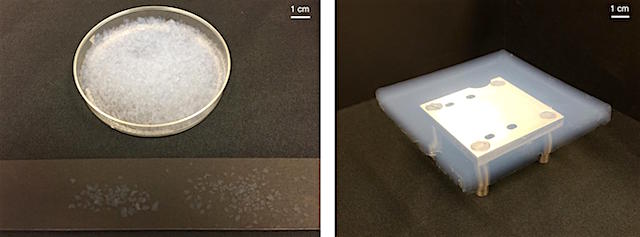 Raising crops on Mars is far easier in science fiction than it will be in real life: The Red Planet is an inhospitable world. Among other challenges, subzero temperatures mean water can persist on the surface only as ice, and the planet’s atmosphere offers little protection to plants (or people) from the Sun’s radiation.
Raising crops on Mars is far easier in science fiction than it will be in real life: The Red Planet is an inhospitable world. Among other challenges, subzero temperatures mean water can persist on the surface only as ice, and the planet’s atmosphere offers little protection to plants (or people) from the Sun’s radiation.
Of course, NASA has plans to eventually put humans on Mars, using lessons it will learn from its Artemis lunar explorations. And those humans will need to eat. Being able to produce food on Mars would help reduce the quantity of supplies consuming valuable space and fuel on crewed missions to the Red Planet. But figuring out how – and where – to produce that food, while also being exceedingly careful not to contaminate Mars with Earth-borne bacteria, are some of the challenges scientists and engineers face.
In a new paper in Nature Astronomy, researchers propose that a material called aerogel might help humans one day build greenhouses and other habitats at Mars’ mid-latitudes, where near-surface water ice has been identified. The study was funded by Harvard University’s Faculty of Arts and Sciences. (…)
In an experiment conducted by lead author Robin Wordsworth of Harvard, 2-3 centimeters of silica aerogel allowed light from a lamp tuned to simulate Martian sunlight to heat the surface beneath it by up to 150 degrees Fahrenheit (65 degrees Celsius) – enough to raise temperatures on the Martian surface and melt water ice. [More at links]








